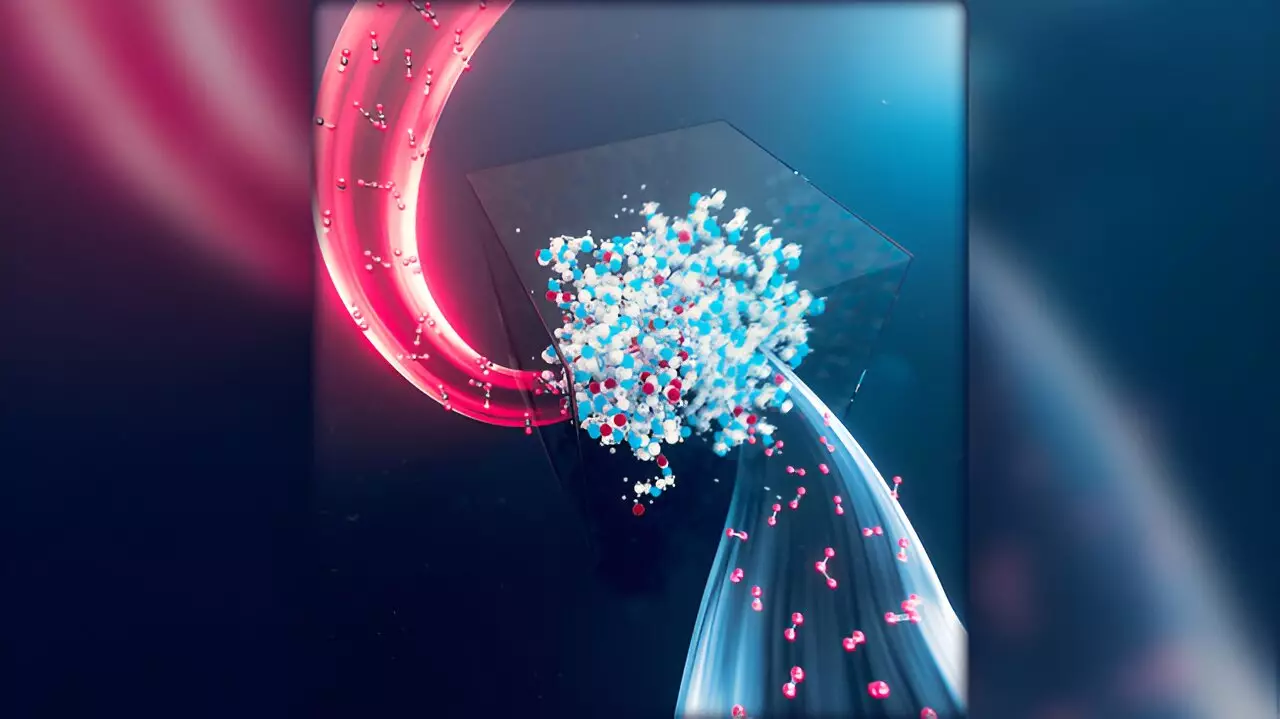A significant development in carbon capture technology has emerged from the collaborative efforts of researchers at Lawrence Livermore National Laboratory (LLNL) and the Georgia Institute of Technology. Their recent study, published in the Journal of the American Chemical Society, provides a deeper understanding of the interactions between carbon dioxide (CO2) and amine-functionalized porous solids. This research is pivotal for enhancing the efficiency and durability of direct air capture (DAC) systems, which play a crucial role in mitigating atmospheric CO2 levels.
Amine-based sorbents are recognized for their remarkable capability in capturing CO2, even in conditions where the gas is present in ultra-dilute quantities. However, a critical challenge has been the long-term stability of these materials, as oxidative degradation often undermines their effectiveness. The LLNL and Georgia Tech research team took it upon themselves to investigate this phenomenon, revealing previously overlooked aspects of how CO2 influences the oxidative degradation rates of poly(ethylenimine) sorbents, an area that had seen conflicting reports in prior studies.
The findings illuminate a dualistic role that CO2 plays in the oxidation processes of these sorbents. According to Sichi Li, the lead author of the study, CO2 not only catalyzes oxidation reactions but also decreases the mobility of polymer branches. This reduced mobility complicates radical propagation, thereby affecting the degradation process. The research highlights the importance of temperature and CO2 concentration in dictating these complex interactions, suggesting that a one-size-fits-all approach to sorbent design may not be viable.
The implications of this research extend well beyond theoretical insights. By identifying the polymer side chain mobility and the presence of acidic conditions as significant contributors to oxidative degradation, the authors propose actionable strategies to enhance the longevity of sorbents. Techniques such as incorporating specific functional groups, utilizing additives, or deploying oxide supports designed to control surface chemistry could significantly improve the resilience of these materials. This proactive approach to sorbent design is essential for developing next-generation DAC technologies that are both efficient and cost-effective.
The research conducted by LLNL and Georgia Institute of Technology represents a vital step toward resolving some of the historical challenges associated with DAC carbon-capture systems. By carefully analyzing the complicated interplay between CO2 and poly(ethylenimine) sorbents, this work fosters a more nuanced understanding of how these materials can be optimized. As the pressing need for effective carbon capture solutions intensifies, the insights gleaned from this study are expected to drive innovations that can support global sustainability efforts, highlighting the essential nature of interdisciplinary research in tackling climate change.


Leave a Reply